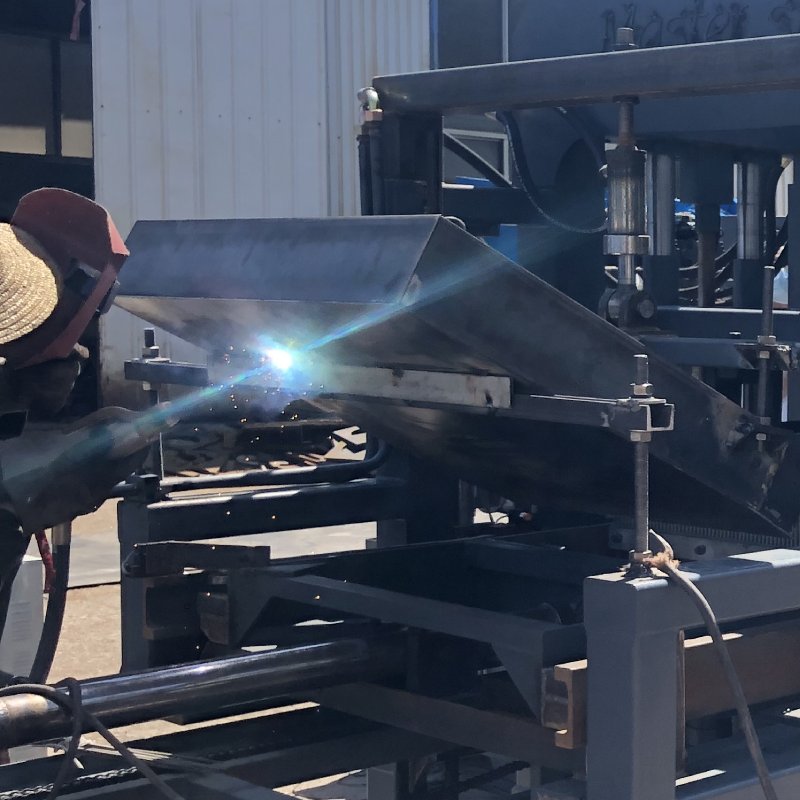
Technology Selection: Choosing Between Semi-Automatic and Automatic Block Machines
The choice between semi-automatic and automatic block machines is a critical decision that significantly impacts the efficiency, production capacity, and overall cost-effectiveness of a block manufacturing business. Both types of machines have their advantages and disadvantages, and the decision should align with your production goals, budget, and operational requirements. Here’s a comparative analysis to help you make an informed choice:
### Semi-Automatic Block Machines:
1. **Operation:**
– **Manual Intervention:** Requires manual labor for various stages of the production process, such as filling the mold, compacting the mixture, and demolding.
– **Semi-Automatic Controls:** Some processes are automated, but operators are involved in specific tasks.
2. **Production Capacity:**
– **Lower Production Rate:** Generally, semi-automatic machines have a lower production capacity compared to fully automatic machines.
3. **Cost:**
– **Lower Initial Investment:** Semi-automatic machines are typically more cost-effective in terms of the initial investment. They require less sophisticated technology.
4. **Flexibility:**
– **Suitable for Small-Scale Operations:** Ideal for businesses with a lower production volume or those starting on a smaller scale.
– **Manual Adjustment:** Offers more flexibility for manual adjustments and adaptations to different block specifications.
5. **Labor Requirements:**
– **Higher Labor Intensity:** Requires a higher level of manual labor, which may result in increased labor costs.
6. **Maintenance:**
– **Simpler Maintenance:** Maintenance tends to be simpler compared to fully automatic machines, as there are fewer automated components.
7. **Energy Consumption:**
– **Lower Energy Consumption:** Semi-automatic machines generally consume less energy than their fully automatic counterparts.
### Automatic Block Machines:
1. **Operation:**
– **Full Automation:** Most processes, including material feeding, compaction, and demolding, are automated without the need for extensive manual intervention.
– **Programmable Controls:** Utilizes programmable logic controllers (PLCs) for precise control.
2. **Production Capacity:**
– **Higher Production Rate:** Fully automatic machines have a significantly higher production capacity, allowing for large-scale production.
3. **Cost:**
– **Higher Initial Investment:** The initial investment for fully automatic machines is typically higher due to advanced technology and automation.
4. **Flexibility:**
– **Suitable for Large-Scale Operations:** Ideal for businesses with high production demands and a focus on large-scale projects.
– **Less Manual Adjustment:** Offers less flexibility for manual adjustments but is highly precise in producing standardized blocks.
5. **Labor Requirements:**
– **Lower Labor Intensity:** Requires fewer operators, leading to potential labor cost savings.
6. **Maintenance:**
– **Advanced Maintenance:** Maintenance may involve more sophisticated technology and could be more complex compared to semi-automatic machines.
7. **Energy Consumption:**
– **Higher Energy Consumption:** Fully automatic machines may consume more energy due to the continuous and automated production processes.
### Considerations for Decision-Making:
1. **Production Scale:**
– **Semi-Automatic:** Suitable for small to medium-scale production.
– **Automatic:** Ideal for large-scale production and meeting high market demand.
2. **Budget Constraints:**
– **Semi-Automatic:** More budget-friendly for businesses with limited capital.
– **Automatic:** Requires a higher initial investment but offers efficiency and scalability.
3. **Labor Availability:**
– **Semi-Automatic:** Suitable if labor is readily available and cost-effective.
– **Automatic:** More cost-effective in regions where labor costs are high, as fewer operators are required.
4. **Customization and Flexibility:**
– **Semi-Automatic:** Provides more flexibility for customization and adaptation to varying block specifications.
– **Automatic:** Well-suited for standardized block production with less manual adjustment.
5. **Energy Efficiency:**
– **Semi-Automatic:** Generally consumes less energy.
– **Automatic:** May have higher energy consumption but can achieve greater production efficiency.
6. **Market Demand:**
– **Semi-Automatic:** Suitable for entering markets with lower demand or for niche products.
– **Automatic:** Ideal for capturing a larger market share and meeting high demand.
### Conclusion:
The choice between semi-automatic and automatic block machines depends on the specific needs, goals, and constraints of your block manufacturing business. Consider factors such as production scale, budget, labor availability, customization requirements, and market demand. It’s advisable to consult with industry experts and suppliers to understand the technological advancements and capabilities of different machines, ensuring that your selection aligns with your business objectives for efficiency, productivity, and profitability.
